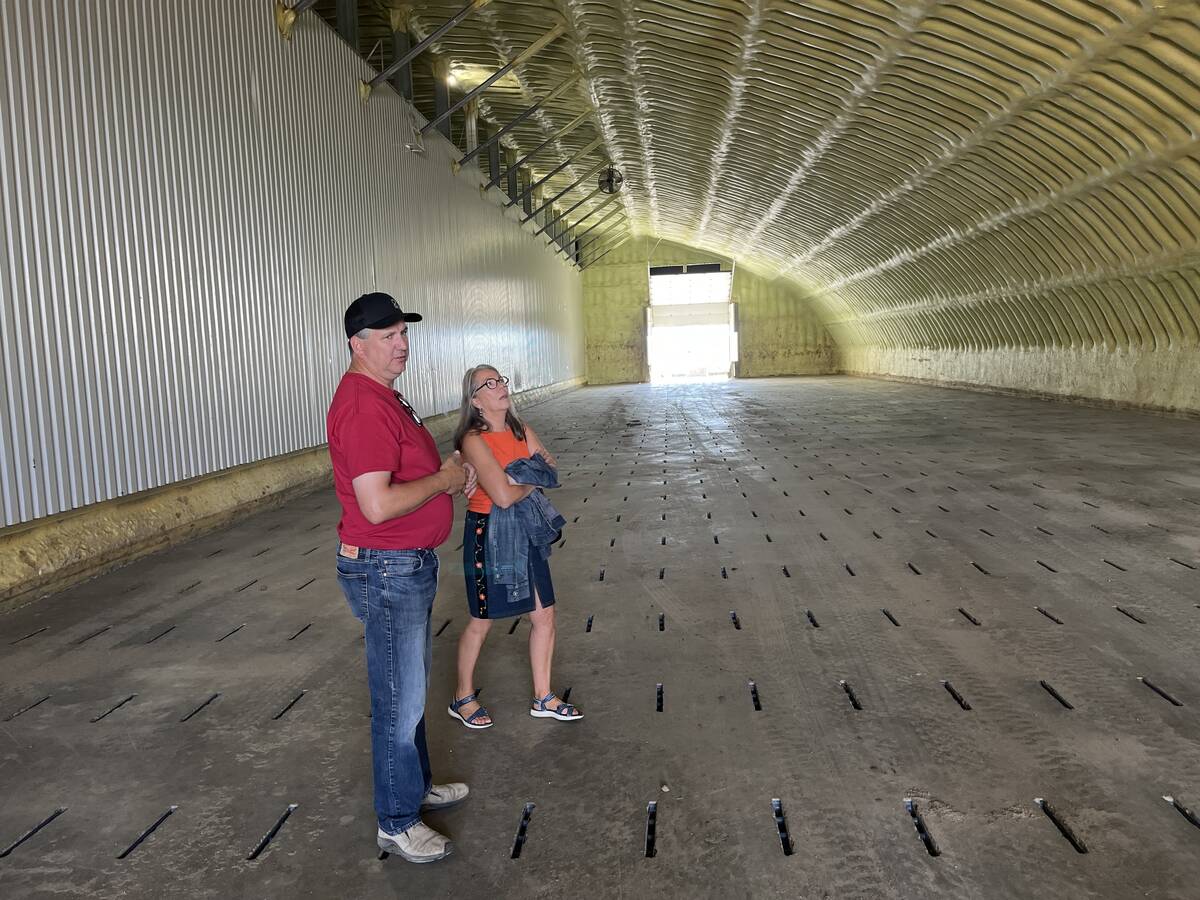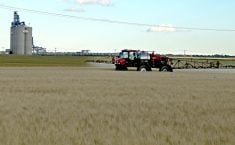Visitors to Grasslands National Park see lots of grass in the spring.
It is green, but it’s not the kind of grass the park wants.
It is crested wheatgrass, a boon to the ranchers who ran herds in these dry plains before the area became a national park.
The wheatgrass takes over if left unchecked, which is what happened when the park banned grazing for the first 20 years of its existence.
The wheatgrass crowded out native plants and today many non-native plants, including smooth brome and yellow sweet clover, are in the park.
Read Also

Potato farm requires year-round management
The most recent Open Farm Day in Alberta showcased agricultural producers across the province educating the general public about the process that is required is to get food to their table.
Its integrity as a preserve for mixed grass native prairie is also threatened by 78 invasive plants not yet found in the park but growing in the region.
A 2007 state of the park report rated the park as only fair in terms of ecological integrity.
“The ecosystem is vulnerable and does not contain a completely healthy composition and abundance of native species and biological communities, rates of changes and supporting processes,” said the report.
Restoring the native prairie grassland is a key aspect of the park’s latest management plan, drafted in 2010.
Resource conservation manager Adrian Sturch said gaining control of the crested wheatgrass is a priority, but it’s a long-term project that requires an integrated approach.
The goal is to reduce the grass to less than one percent of cover on 30 acres per year and by 15 percent overall from 2009 surveys.
“We’re looking at better management through early spring grazing, prescribed fire and herbicide application,” he said.
“Ranchers graze crested wheatgrass early so it doesn’t set seed and spread.”
Short, intense periods of cattle grazing have been identified as a desirable activity in the park.
“Modified disturbance regimes, particularly wildfire, large herbivore grazing and flooding, are important processes to the functioning and biodiversity of the mixed grass prairie ecosystem,” said the 2010 plan.
“The park’s role in reintroducing these disturbance regimes and managing them in a manner that respects the concerns of park neighbours and regional interests is a major challenge for park management.”
However, other widespread practices such as winter grazing have not yet been adopted.
“We are grazing for ecological purposes,” Sturch said. “We don’t want people to become reliant on (park land).”
However, it might be 20 years before crested wheatgrass is under control, and spring grazing could play a role throughout that time.
“It’s had a 20-year head start,” noted local rancher Greg Kornfeld.
Some crested wheatgrass fields are burned early in April to remove litter and then seeded to a native plant mix. Others are treated with herbicides and reseeded.
Sturch said attitudes are changing. “Ten years ago it was pretty hard to find support for prescribed burns,” he said.
Sturch said park employees are learning that yearlings favour grazing plants that grow after a burn and that burrowing owls will nest on that land.
Experimenting with fire has been done on a small scale, with 20-acre burned and unburned plots.
“If we start small we make small mistakes,” Sturch said.
Ecosystem scientist Michael Fitzsimmons is measuring the progress against crested wheatgrass and figuring out where to attack next.
Permanent transects were installed in a control field and a field burned in 2009 to measure seed head production in the same location each year. The burned field has also been subsequently grazed.
“We do see more native plants and less crested wheatgrass,” Fitzsimmons said.
Sturch doesn’t expect that a burn and three years of grazing will eliminate crested wheatgrass.
“Crested wheatgrass doesn’t have any weaknesses,” Sturch said. “But we might be able to keep it under control.”
The park is also reseeding land that was cultivated before the park was created. Four hundred acres have been seeded to native grasses and wildflowers since 2002. The target is to revegetate all cultivated land by 2013.

















